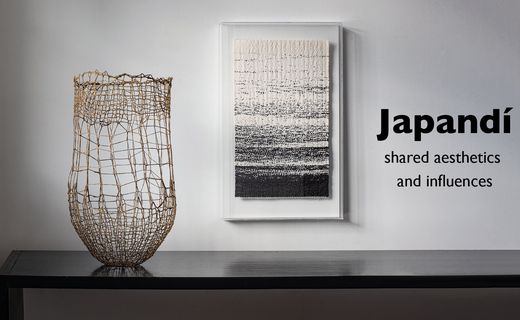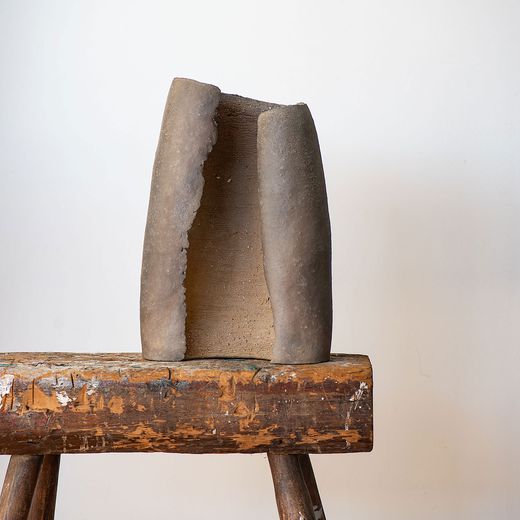
browngrotta arts
Japandi: shared aesthetics and influences
From October 4, 2021 to October 31, 2021

Kohyama was born in Shigaraki and graduated from the local Industrial Experiment Center. He was the major force, together with the late Michio Furutani, in reviving the use of the anagama kiln in order to produce Ko-Shigaraki (old Shigaraki) style pottery. This renaissance has since spread world wide. In those days, he created traditional works (vases and tea-ceremony pieces that are usually associated with Japanese ceramics). The first exhibition of work in Tokyo from the anagama kiln created enormous interest and was visited by many well-known potters, including Shoji Hamada.
Kohyama was the first Japanese artists to experiment extensively with cutting techniques (mentori-waza). He wanted to remain true to the original ways and use traditional Shigaraki clay, which is extremely coarse, and this meant eventually fashioning a cutting implement using guitar strings.
The forms and textures he has developed are unique and are based around nature.
Selected permanent collections:
Metropolitan Museum of Art, New York, New York; Museum of Art and Design, New York, New York; Philadelphia Museum of Art, Pennsylvania; Cleveland Museum of Art, Ohio; Everson Museum of Art, Syracuse, New York; Museum het Princesshof, Leewarden, the Netherlands; Het Kruithus Museum voor Hedendaagse Kunsts-' Hertogenbosch, the Netherlands; Museum für Kunst und Gewerbe, Hamburg, Germany; Stedelijk Museum, Amsterdam, the Netherlands; Brooklyn University, New York, New York; Stoke-on-Trent City Museum, Staffordshire, England; St. Louis Museum of Art, Missouri; Chicago University, Illinois
Choose your preferences
The art is yours
The art is yours